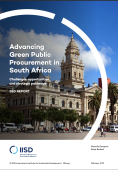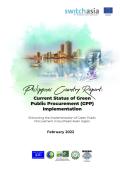
As purchasers of a diverse range of goods, services and infrastructure to meet not only their own operational needs but also to deliver on their public service mandate, governments procurement spending represents scaled-up and long-term demand across a wide number of industries. Strategically directed, this demand has the ability to act as a market supporter and catalyst, incentivizing businesses to take the risks to invest, innovate and commercialize green products and services (IISD, 2012).
By committing to the purchase of goods and services that meet certain sustainability criteria, governments can help stimulate the creation of green markets. For instance, government procurement can trigger high-volume and long-term demand for green goods and services, and thereby allow firms to capture economies of scale. Appropriate incentives can boost technology investment and spur firms to innovate. In addition to stimulating the greening of economic sectors, procurement choices are crucial for governments to lead by example and demonstrate their commitment to sustainable development.
Relevance to the SDGs
The Sustainable Development Goal (SDG) 12 references the sustainable use of goods and services. Specifically, target 12.7 promotes public procurement practices that are sustainable, in accordance with national policies and priorities.
Explore green growth resources related to SDG 12:
Government procurement contracts can provide significant opportunities for companies and have large economic value, representing approximately 12% of GDP in OECD countries and up to 30% of GDP in many developing countries. Sustainability is becoming increasingly important in government procurement policies, with almost all OECD countries setting sustainable public procurement priorities.
By adopting sustainable practices, companies make themselves more competitive to win highly profitable government procurement contracts. In a global review of government procurement policies, all of the 41 surveyed governments reported that sustainable public procurement commitments and provisions were somehow reflected in their policies. However, the study found that the integration of sustainability considerations in procurement processes, procedures, and tools has not yet been fully implemented.













